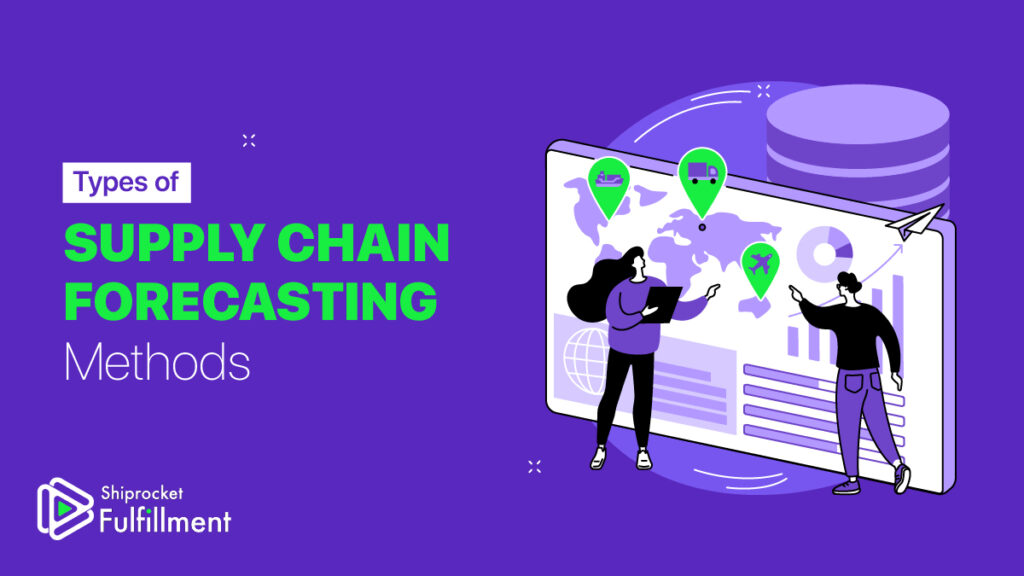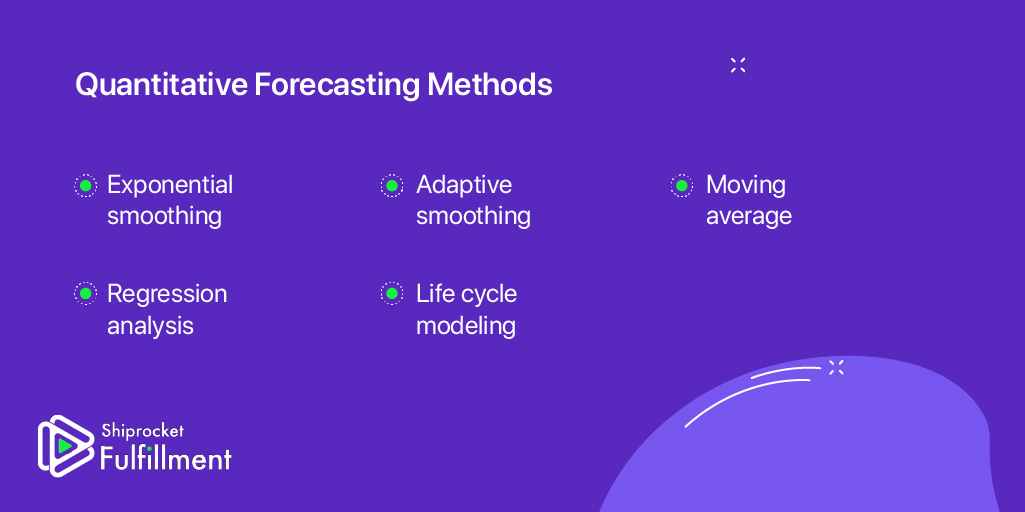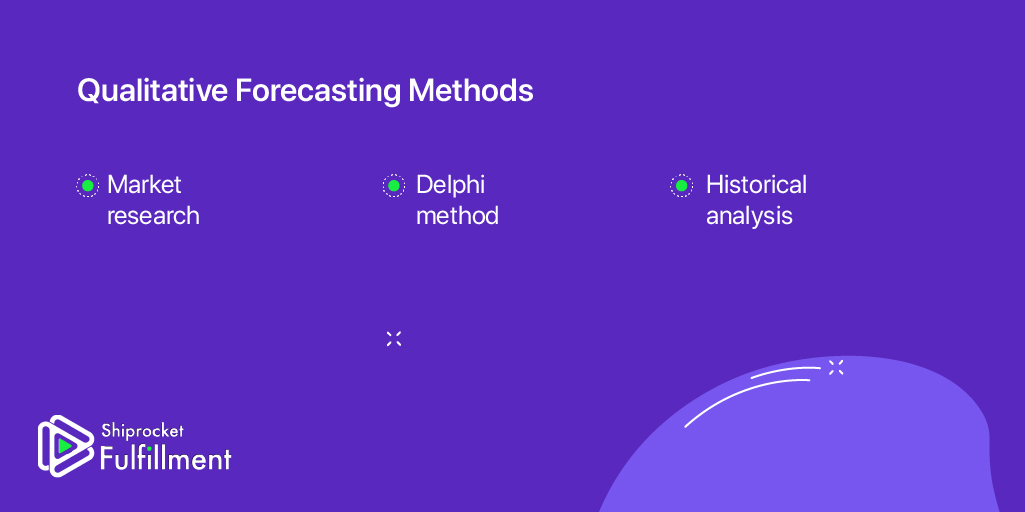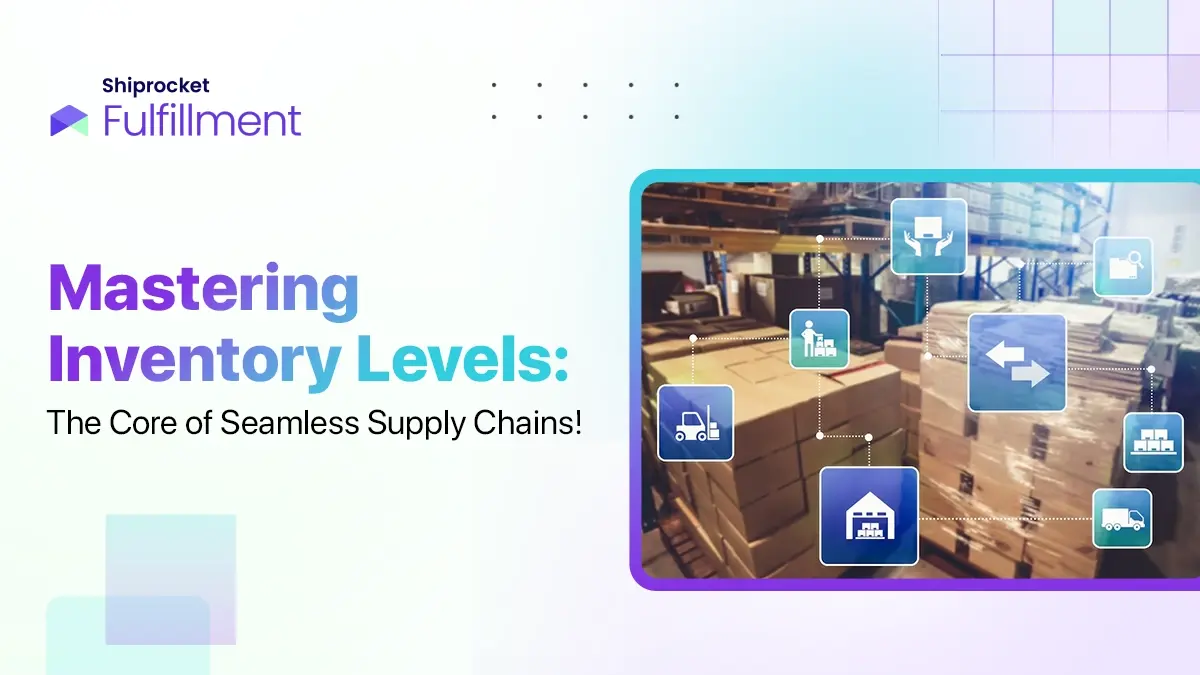When you run a business as dynamic as eCommerce, you are always keen to know what will happen next. Will there be a surge in order, or will there be a drop? Nobody knows. We hope there was some sort of ability to predict future outcomes of our decisions, but that is highly unlikely.

However, a supply chain cannot work without any analysis of possible future events. You need to predict something as there are so many moving parts, and if you don’t, there can be a breakdown somewhere, leading to losses.
Let’s look at how you can forecast demand appropriately to understand which method works best for you. Depending on the size of your business, type of products, and customer demand, you can forecast the market and plan your business accordingly to be prepared for any faulty situation.
Let’s look at what supply chain forecasting is and how you can do it effectively for your business with the different forecasting methods.
What is Supply Chain Forecasting?
Supply chain forecasting refers to the process of predicting the outcomes on all aspects of the supply chain based on data and research so that the entire supply chain functions smoothly.
In standard terms, supply chain forecasting is often used interchangeably with demand forecasting and sales projections. But, it can also be used to talk about the production lead time, pricing, labor needs, etc.
Supply chain forecasting involves combining historical data with insights into market demand to make informed business decisions. Businesses can predict and optimise inventories, shipment schedules, budgets, market strategies, and other related aspects by examining supplier data and historical supply chain activities.
Supply chain forecasting also helps predict customer demand based on factors such as seasons, holidays, and unexpected events like global crises or natural disasters. Businesses can boost customer satisfaction, handle risks more successfully, and streamline operations by integrating supply and demand research.
Businesses may also benefit from improved supply chain forecasting using artificial intelligence (AI), which can improve productivity, accuracy, and responsiveness. This will also help to quickly adjust to changing market conditions. Large volumes of forecasting data can be processed quickly and effectively by AI-powered supply chain systems. This can provide useful insights to support flexible supply chain operations.
Significance of Supply Chain Forecasting
Supply chain forecasting becomes an integral part of your business.
To anticipate industry demand, supply, and pricing, forecasting is essential to supply chain management. It provides businesses and eCommerce merchants with several advantages. They are as follows:
- Enhanced Scheduling and Planning Procedures: By using insights from historical and current demand trends, forecasting dramatically enhances scheduling and planning procedures and empowers supply chains to remain proactive.
- Identifying and Preparing for Seasonal Demand Patterns: Accurate forecasting facilitates the identification and preparation of seasonal variations in demand. It also assists in planning promotional activities and product launches, reducing guesswork through data-backed predictions.
- Precise Forecasting of Product Demand: Demand forecasting makes it possible to accurately estimate product demand, even under particular conditions. Even if total future prediction accuracy is not possible, making informed decisions based on past facts and current patterns is still possible.
- Increased Customer Satisfaction: In businesses where products are the focus, anticipating and knowing what customers need is essential. Predicting client demand helps suppliers and consumers build confidence by ensuring fast order fulfillment.
- Reduction of Safety Stock: Forecasting reduces the requirement for surplus safety stock. This reduces the need for additional storage space and concerns about having excessive inventory.
- Handle Inventory: Detailed forecasts of demand may aid in inventory control and assist avoid overstocking or understocking. Underestimating demand can result in stockouts, which can lead to lost sales opportunities and disgruntled customers. On the other hand, overestimating demand results in surplus inventory, which locks up money and storage space. Forecasting makes inventory management more effective by cutting down on storage times and related expenses.
- Optimised Shipping Operations: Supply chain managers may deploy resources more effectively and guarantee on-time order fulfillment by forecasting demand. Sufficient worker numbers save labour expenses and eliminate shipment delays.
- Better Pricing Strategies: pricing forecasting gives businesses the ability to foresee how changes in pricing will affect their supply chain. By being proactive in adjusting price methods, this insight maximises profits.
Now Let’s have a look at the different quantitative and qualitative forecasting methods for e-commerce supply chain forecasting.
Quantitative Forecasting Methods

When considering forecasting in supply chain management, the conventional approach often revolves around quantitative methods, relying on historical data, time series analysis, and correlation information.
Leveraging data-driven insights offers a systematic approach to enhance future planning and decision-making from both short- and long-term perspectives.
Quantitative forecasting techniques vary in eCommerce logistics. The five categories of quantitative approaches are summarised as follows:
Exponential Smoothing
exponential smoothing uses weighted averages to assume that the past data like sales trends and other events will be the same in the future.
Data-driven predictions are made easier using this strategy, which eliminates the need for in-depth study. With the appropriate instruments, it is especially useful for short-term forecasting and is simple to apply.
Adaptive Smoothing
Adaptive smoothing uses different variables to drive a prediction. It takes into account more significant changes from period to period and identifies specific patterns.
But after smoothing requires automation tools that can record, collect, and collate data in real-time. It is helpful for businesses that have an extensive product catalog and need more accurate predictions. This approach works well for precise forecasts across various kinds of product catalogues.

Moving Average
The moving average is one of the easiest methods for supply chain forecasting. To forecast future trends, the moving average approach computes averages of subsets of data points.
This average is used to predict the upcoming period, which is then re-calculated every month, quarter, or year.
Regression Analysis
Regression analysis takes into account a relationship between two or more specific variables to predict outcomes. When there are variations in the conduction of regression analysis, the influence of one or more independent variables is examined on a dependent variable.
Regression analysis is used to meet determination for seasonality, etc. It is a fast and easy way to get predictions.
Life Cycle Modeling
Life cycle modelling examines how new products are created and how they grow across different sectors of the market.
It utilizes data from market groups such as creators, adopters, and the majority to determine a specific product’s future performance and demand.
This is used by brands to determine how to distribute and market products in the long run.
Qualitative Forecasting Methods

Ecommerce businesses use a combination of quantitative and qualitative techniques to improve their forecast accuracy. Qualitative methods become especially useful when there isn’t enough data, such as for new businesses or innovative products.
Here are 4 qualitative forecasting methods used in eCommerce supply chain forecasting:
Market Research
For e-commerce, market research is used to predict supply and demand to ensure profitability.. It is also helpful for determining if there is a strong demand for a product and if that will support profit goals.
This could involve hiring professional third-party companies or conducting internal assessments carried out by experts in sales or marketing. Techniques such as stakeholder surveys, competitive analysis, and expert interviews are employed to gather insights.
Delphi Method
The Delphi method is renowned for its reliability in long-term forecasting. This method entails independently gathering opinions from a select group of experts or advisors without being influenced by others’ views. Third-party experts then analyse these opinions to identify patterns and trends. The opinion of each expert is gathered individually so that there is no influence.
Historical analysis
Historical analysis refers to the examination of past sales data of similar products to help predict sales.
Historical data can also be used by looking at your competition’s high-selling products and looking at similarities to determine demand.
For instance, comparing the features and performance of previous top-selling products can guide in developing and marketing new types of similar products.
Panel Consensus
This method involves insights from stakeholders and teams from various levels of the business in forecasting processes. This approach fosters open discussions and helps in leveraging the collective expertise of these stakeholders. For example, collaborating with customer service or sales teams can provide valuable insights into customer preferences and product performance.
Final Thoughts
As industries evolve, employing straightforward forecasting techniques will remain essential for staying competitive and standing out in the global supply chain landscape. It serves as a fundamental tool for making informed decisions regarding budget allocation, strategic planning, and inventory control. Through the application of both qualitative and quantitative forecasting methodologies, businesses can effectively navigate the evolving dynamics of the market. Make sure you take into account both these methods when making a business decision. A thorough supply chain forecasting will help you make more insightful decisions about your business so you can grow without any frequent roadblocks.









